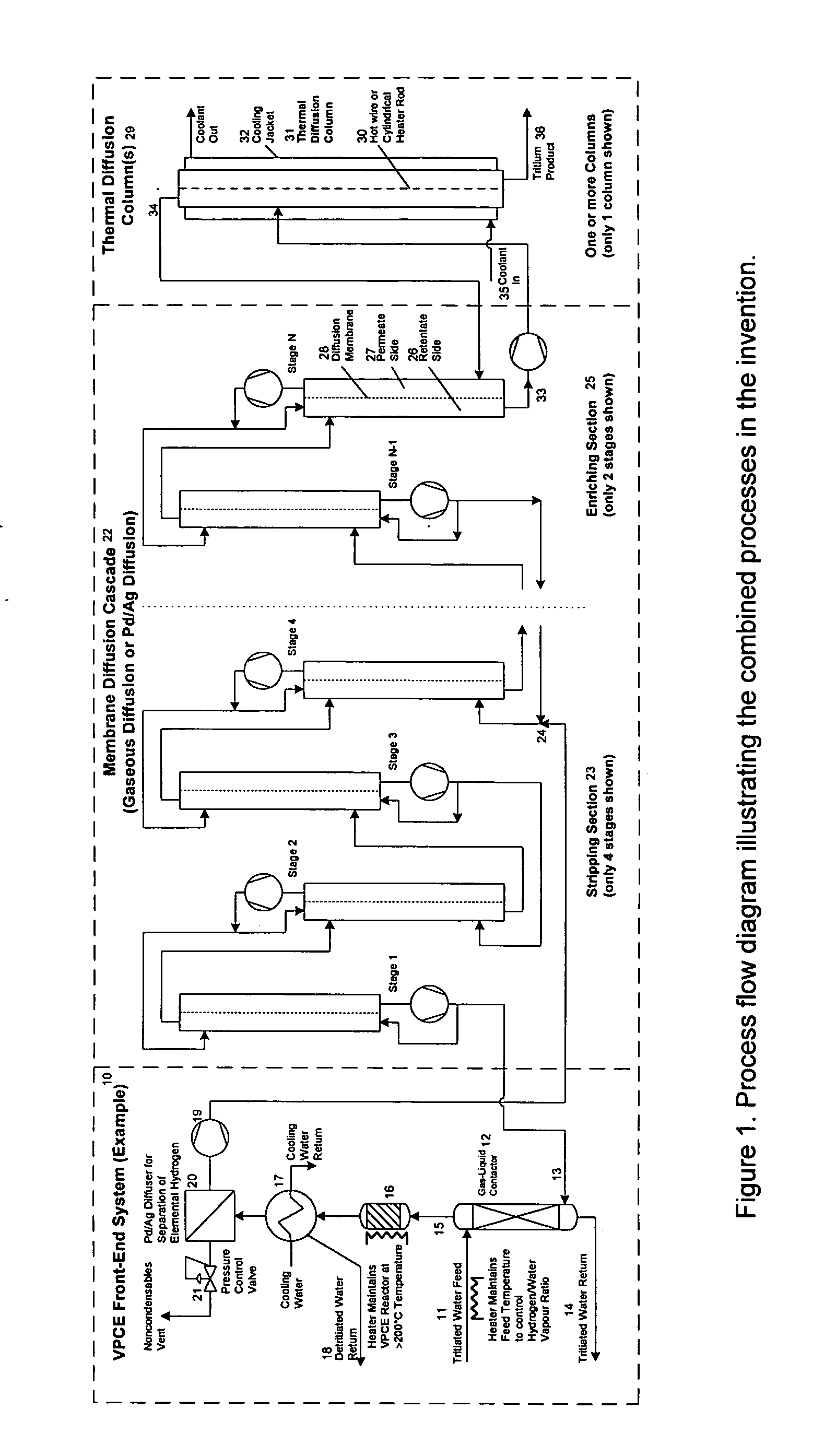Process for tritium removal from water by transfer of tritium from water to an elemental hydrogen stream, followed by membrane diffusion tritium stripping and enrichment, and final tritium enrichment by thermal diffusion
a technology of tritium and water, applied in the direction of hydrogen isotopes, separation processes, uranium compounds, etc., can solve the problems of gaseous diffusion not being used for large-scale hydrogen isotope separation, affecting the hydrogen throughput of the proposed device, and affecting the separation effect of hydrogen isotopes
- Summary
- Abstract
- Description
- Claims
- Application Information
AI Technical Summary
Benefits of technology
Problems solved by technology
Method used
Image
Examples
Embodiment Construction
[0031]Detailed descriptions of the preferred embodiment are provided herein. It is to be understood, however, that the present invention may be embodied in various forms. Therefore, specific details disclosed herein are not to be interpreted as limiting, but rather as a basis for the claims and as a representative basis for teaching one skilled in the art to employ the present invention in virtually any appropriately detailed system, structure or manner.
[0032]In accordance with the present invention, FIG. 1 shows a conceptual process flow diagram for a water detritiation system based on the invention. The Front-End System 10 shown is a Vapor Phase Catalytic Exchange (VPCE) system where tritiated water feed 11 flows into gas-liquid contactor 12 which is used to humidify detritiated gas stream 13. Unevaporated water 14 leaving the gas-liquid contactor 12 may be recycled back to feed stream 11 or returned to source, depending on the application.
[0033]In this example, the temperature of...
PUM
| Property | Measurement | Unit |
|---|---|---|
| pressure | aaaaa | aaaaa |
| concentration | aaaaa | aaaaa |
| pressures | aaaaa | aaaaa |
Abstract
Description
Claims
Application Information
 Login to View More
Login to View More - R&D
- Intellectual Property
- Life Sciences
- Materials
- Tech Scout
- Unparalleled Data Quality
- Higher Quality Content
- 60% Fewer Hallucinations
Browse by: Latest US Patents, China's latest patents, Technical Efficacy Thesaurus, Application Domain, Technology Topic, Popular Technical Reports.
© 2025 PatSnap. All rights reserved.Legal|Privacy policy|Modern Slavery Act Transparency Statement|Sitemap|About US| Contact US: help@patsnap.com


